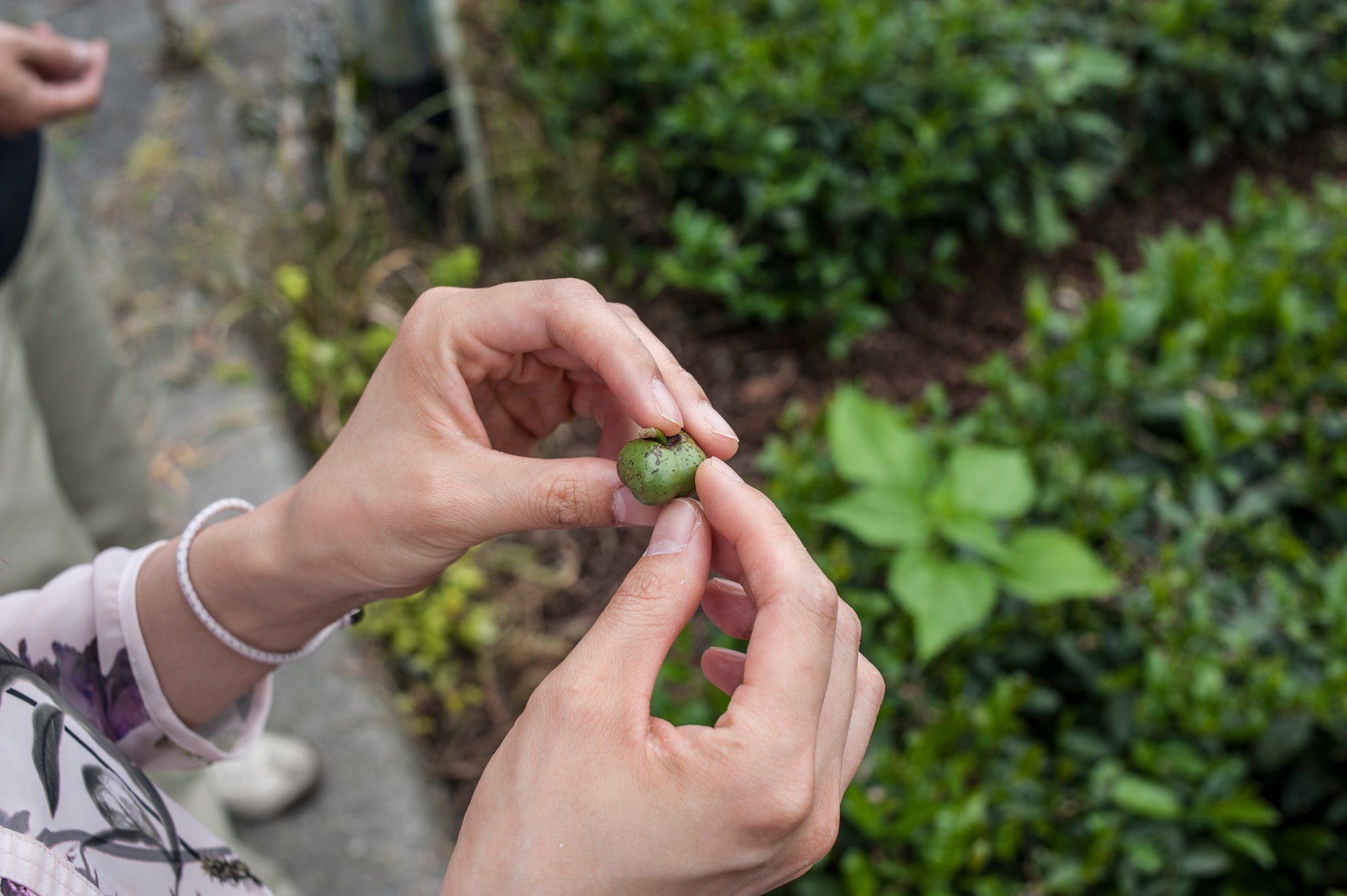For the longest time in my life, I thought matcha didn't have varieties and the taste differences would be from different harvest seasons and methods, or maybe the length of shading. Matcha is actually like any other plants that has different cultivated varieties which determine the taste and flavour of its end product. Another example is wine; it's all made from grapes but there are different kinds of grapes, Chardonnay, Shiraz, Pinot Noir, Merlot etc... those grape varieties determine the flavour of the wine.
Non-cultivated variety is called Zairai, which means planting from seed. There're so many different genes & possibilities (be it good or not so good) in a tiny seed, and it's like a lottery ticket for farmers. It can be amazingly strong and flavourful, or the opposite. That's why nowadays tea farmers don't like to use Zairai method because of the risks and contingencies.
Most of the tea farmers choose cultivated varieties and they usually buy from a renowned "tea breeder" who sells those ready-to-plant tea trees. Similar with the time you go to Home Depot and buy those little tomato plant in a little pot, and move them to the ground afterwards. They'd also like to choose different kinds, maybe 50 of Yabukita, 50 of Samidori, 50 of Asahi etc (in the Tomato case, people may choose some Beefsteak, some Roma). After harvest, they have two options: group them according to their cultivar and sell as single cultivar tea, or they blend them together. You may ask: why do they blend them together?
There're two main reasons:
1. Taste
Each cultivar has its own distinctive flavour - similar to wine, some people love Merlot and some people love Shiraz. When blending them all together, the tea farms are creating their own "flavour" that other tea farms cannot duplicate. Some tea farms even blend over 5 varieties to create something that's hard to copy.
2. Production
Each cultivar produces unequal amount of end products; for examples, Yabukita is a very strong and frost-resistant cultivar, so it tends to produce more than other ones. To ensure an average and steady supply, the tea farmers like to blend Yabukita in other lower-production cultivar, so the total yield can be more consistent. In a mass-production factory, you'd rarely find single cultivar tea (unless they only grow one variety).
Some famous Japanese tea companies such as Ippodo, Marukyu-Koyamaen, Hoshino-Seichaen, buy tea from other tea farms (instead of owning and maintaining their tea farms). Companies in-house tea master will grade those tea and blend them together to reach a unique taste, and name them differently.
Do you like blended matcha or single-cultivar matcha? While most of our matcha is single-cultivar, can you guess which of our matcha is blended cultivar?

